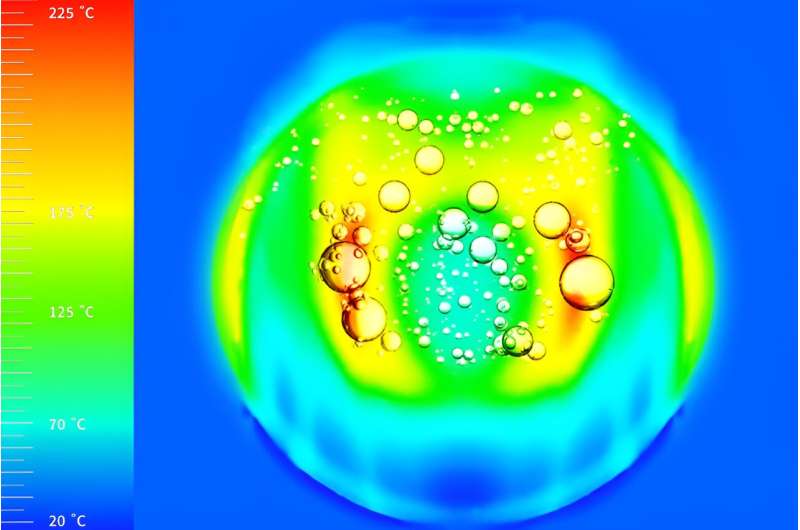This article has been reviewed according to Science X's editorial process and policies. Editors have highlighted the following attributes while ensuring the content's credibility:
fact-checked
trusted source
proofread
Deep learning model overcomes the challenge of real-world measurements of isotope production target cooling systems

When a particle beam hits a target in an isotope production facility, it generates heat that is removed by water channels. The transfer of heat between the target and the flowing water produces subcooled flow boiling. This is a situation where evaporation and condensation occur simultaneously. Without sufficient cooling, temperatures can reach a critical point, melting and destroying the target.
Researchers wanted to test the limits of the cooling systems in an isotope production facility. However, the radiation levels present during target irradiation are too high to allow real-world measurements. Instead, the researchers built a mock apparatus to collect temperatures and high-speed video of boiling. They analyzed the measurements with deep-learning tools and used the results to validate a model that predicts boiling in these complex systems.
The work is published in the International Journal of Heat and Mass Transfer.
Isotope production facilities use targets to create isotopes that support medical imaging, cancer therapy, and other applications. Particle accelerators and isotope production facilities depend on cooling for the proper function of target systems during irradiation. The target systems at Los Alamos Neutron Science Center's (LANSCE) Isotope Production Facility rely on a series of water channels in the target system to remove heat as targets are irradiated.
With that connection to biology in mind, researchers used a deep-learning tool originally designed to track biological cell activity to examine water cooling. The tool analyzed bubbles in the water as an indicator of boiling, tracking bubble formation, size, and movement.
With the adapted algorithm, the team extracted critical bubble parameters from a high-speed video, enabling the researchers to develop and validate a framework to predict a complete boiling curve. The researchers then confirmed that current operations are well below the predicted critical heat flux.
This model can be expanded for full-scale modeling of complex multi-target and cooling channel geometries and potentially benefits other particle accelerator target applications and isotope production facilities that lack in-beam monitoring at different accelerators worldwide.
More information: Jee Hyun Seong et al, Development of experimental and computational frameworks to predict subcooled flow boiling in the LANL Isotope Production Facility, International Journal of Heat and Mass Transfer (2023). DOI: 10.1016/j.ijheatmasstransfer.2022.123836
Provided by US Department of Energy





















